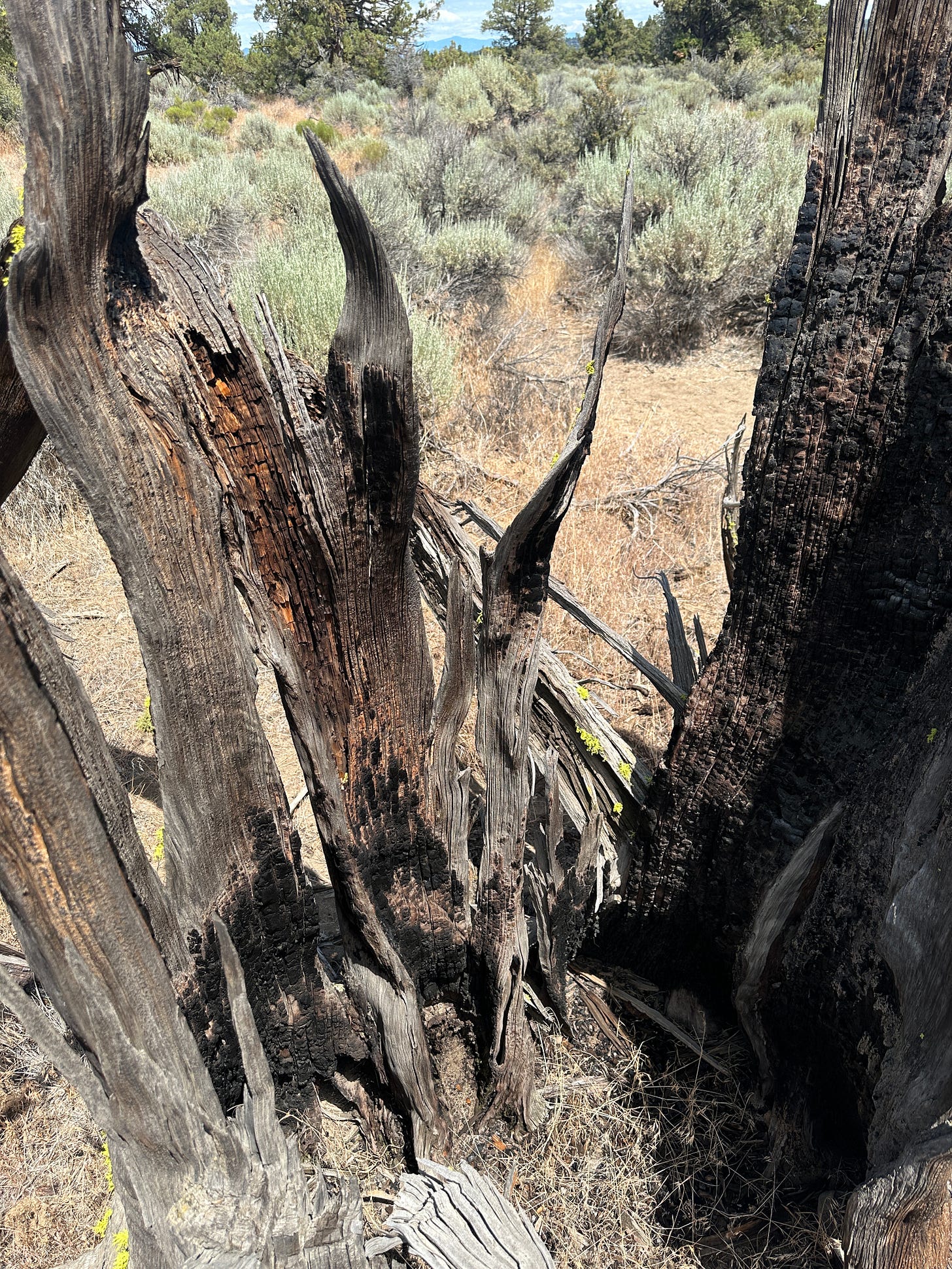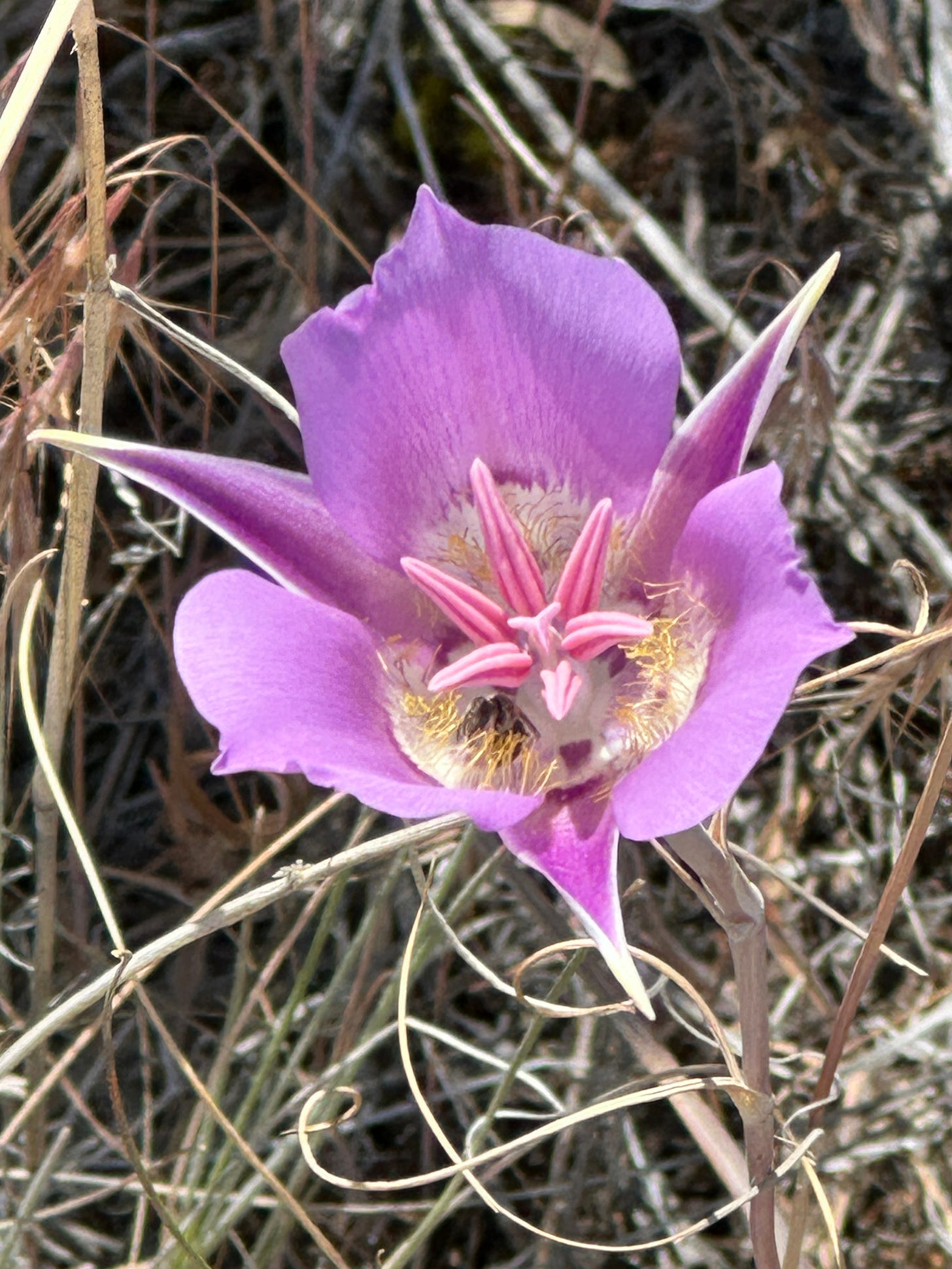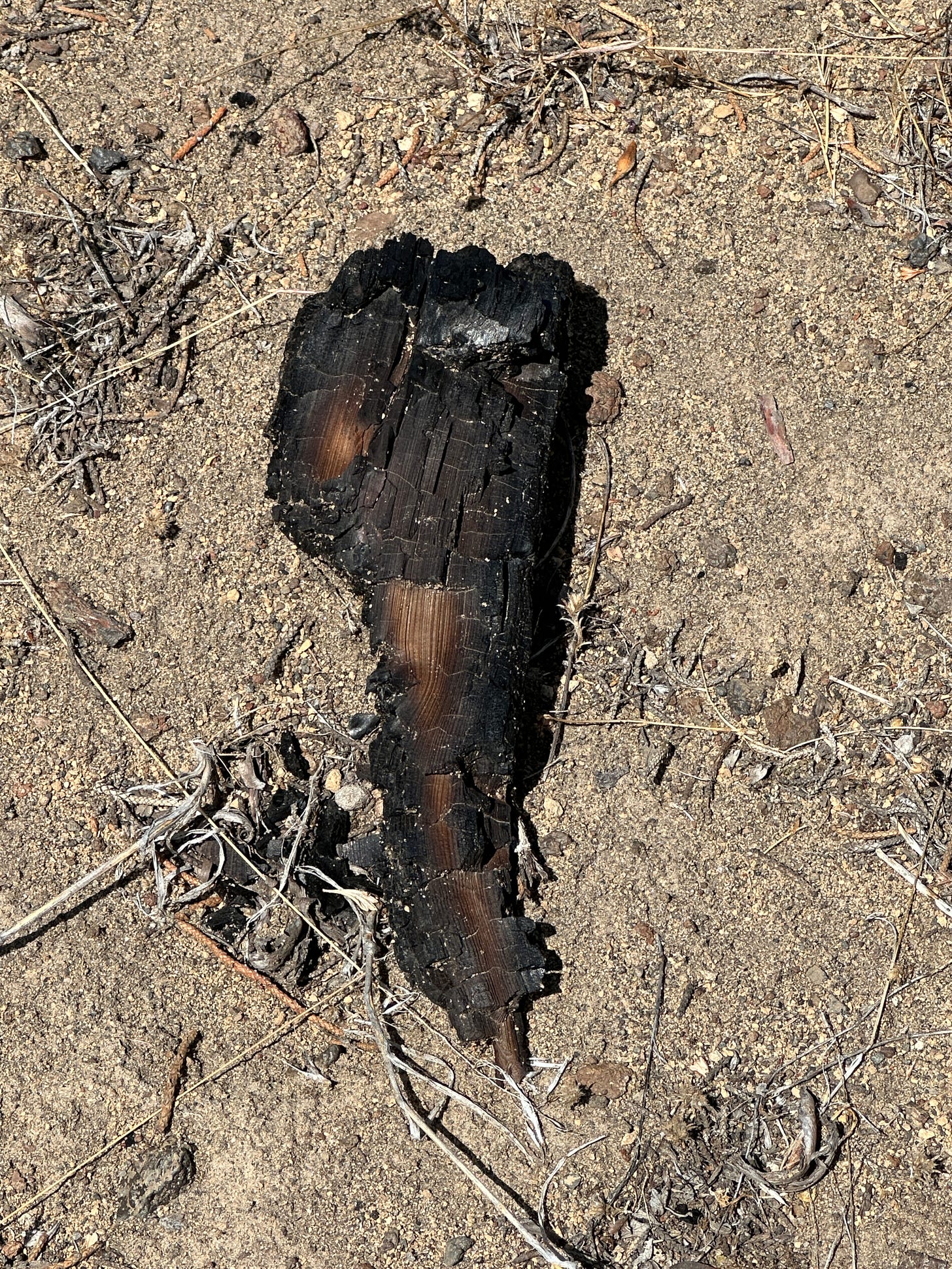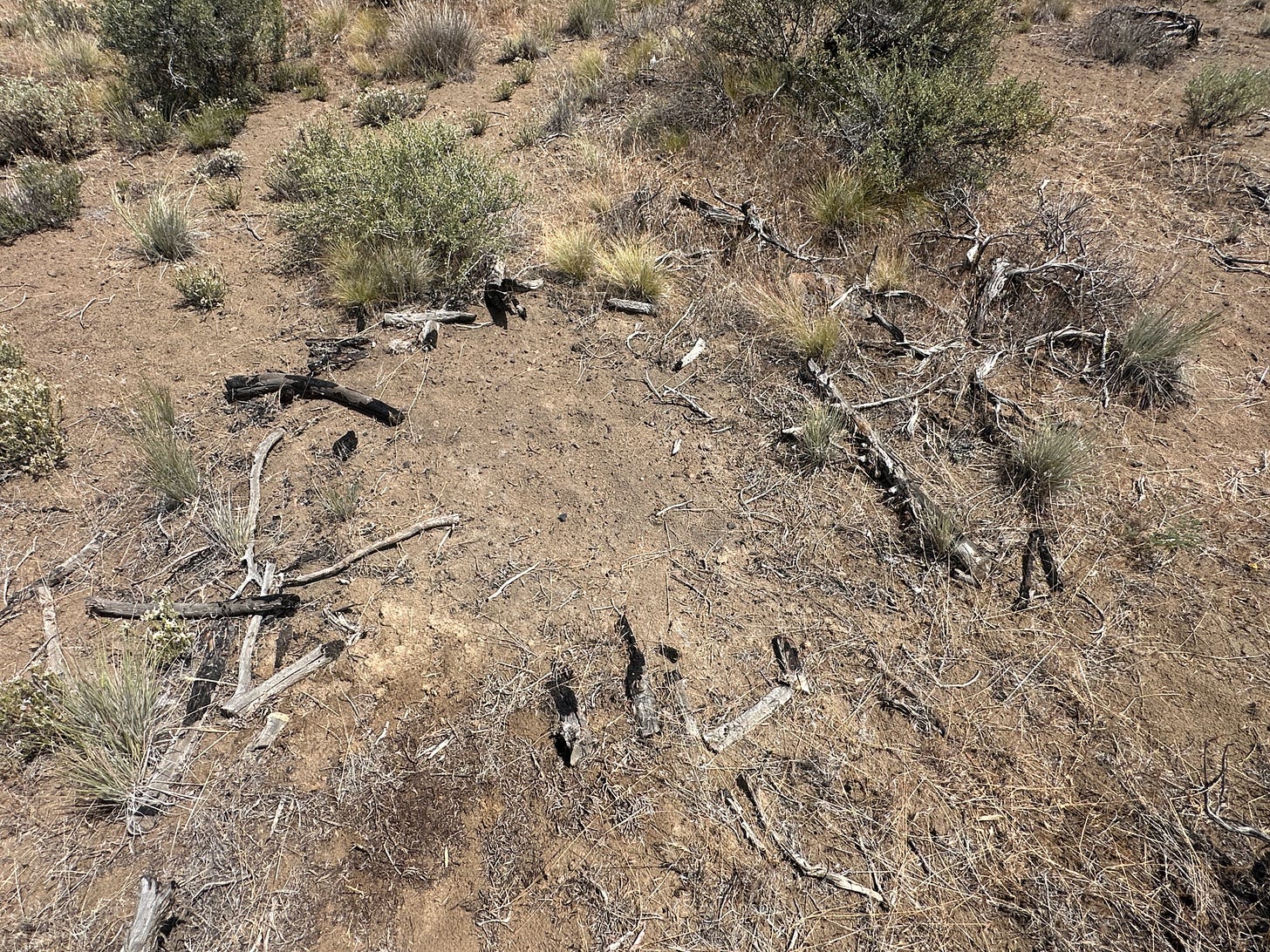Hollowed remains of a lightning-struck Juniper, Maston trail, Oregon.
Perfect hiking is when three people can walk and converse, 10 feet apart from each other on the trail, with no interference from each others’ dust.
This describes an outing on July 4 on the Maston trail system near Redmond, Ore., when my wife, Lorre and our friend Sam, hiked the 4.3-mile Rabbit Loop from Juniper Trailhead to the Deschutes River canyon and back. The holiday afternoon was perfect for the scenic trail just minutes from town, introduced to us by Sam. I plan to go back.
We took turns taking the lead, stopping to admire flowers, rocks, wood remnants and other ground-level features on this high desert path; we periodically passed along remarks as we continued our strides on that cool, comfortable mid-day ramble. A gentle breeze flowed past at times and the air remained dust-free. We took a water break at about two miles. We saw little wildlife – no rabbits on the loop, for example — but, memorably, witnessed the frantic black-white wing flashes of a trio of magpies surprising us at about mile three. Doubtless the wildlife saw us.
We hiked as a cohesive trio, speaking little for long stretches, but finding much to discuss about the lovely and abundant lavender-toned sage brush mariposa lily, pollinators buzzing into every multi-pistil tri-petal cup. We admired the way the occasional juniper and cedar embraced, two trees twisting around each other, and other places where the notably sinewy juniper seemed to spiral or curl, how bark in places had turned a rich chocolate brown while on the same tree a single, barren branch turned white from wind and weather.
Sagebrush mariposa lily, Maston trail.
Juniper are contortion conifers. Their writhing angles, each trunk or branch skewing or corkscrewing in ways that give each tree its own personality – and then in places one sees a sort of grove of uniformly tall and aligned trees.
Junipers rise from the ground knotted or curled, and in a flashing moment nature sculpts them from above. We saw more than one juniper marked by lightning, some half-severed or knocked flat, others symmetrically splayed like black banana peels, their charred centers and drooping bouquet of dark branches forming evidence of the conifer detonation zone.
One source I read states that juniper, with its “volatile oils” and dead material, can be highly combustible and may be more prone to damage from lightning.
An article on the website Meanings of Life states, “trees are hit by lightning more than any other entity on Earth due to their height. … The act of lightning striking down on life-bearing trees encapsulates two powerful symbols coming together – tree: life and wisdom; lightning: divine power and purity.
“From a scientific standpoint, lightning is nothing more than an electrical discharged caused by imbalances between storm clouds and the ground or within the clouds themselves. Yet even this simplistic explanation can’t detract from its awe-inspiring spectacle. ... Its fleeting presence invokes feelings of wonderment while its destructive capabilities serve as a stark reminder that there are forces in this universe far greater than ourselves…
“Lightning never fails to captivate us with its mesmerizing dance between heaven and earth.”
The desert holds its secrets – you stay on the path both to avoid disrupting the eagles and falcons as well as to preclude a rattlesnake encounter – but these splintered and blackened stumps reveal firm evidence of what happened here. How long ago, it is hard to say. The tree strikes have the appearance of being recent but the impact was so drastic it tends to shield the passage of time; it could have been years and years ago. In places one can see outlines of charred chunks forming a circle or oval around loose soil or sand, in what almost resembles an abandoned garden spot or former campfire, curious tableaux that belie their creation by an instantaneous, violent force.
Some lightning-struck junipers retain large sections of the tree, perhaps the middle emptied and looking like a cauldron. Others, these gentler sand-filled rings, are all that is left of a massive combustion that literally sent the tree flying in pieces. And it is those dispersed juniper shards, mostly 6 to 8 inches long, some considerably smaller, that rest as fragments along the trail. Did that black chunk the size and shape of a TV remote come from that blackened juniper 10 steps away, or was it expelled from the larger conifer 100 feet down the trail?
Looks like a fire here but not a camp fire; above, a 10=inch fragment, but how recently charred?
I’m intrigued by the precise source of these juniper fragments, but admit it is impossible to know. I doubt there is some technique for lighting-smashed tree reconstruction similar to that of pottery or bones in archaeology. So, in turn, these wooden fragments must be seen as parts of the same forest. They came not from a particular lightning juniper but from any of the destroyed trees.
The trail holds many secrets, and many pieces of beauty. The trail as a whole was a place of wonder, and Maston has its peculiar grandeur. Pondering just what happened to the junipers can’t diminish the truth in something I just read from writer Terry Tempest Williams: “the wide open vistas that sustain our souls, the depth of silence that pushes us toward sanity, return us to a kind of equilibrium.”
---






Lovely description of your afternoon immersed in nature. There are shards everywhere, Kirby! Love the picture of the lily, such a beautiful flower in the midst of Juniper.